Understanding Cancer Lumps In Dogs: When To Worry And What To Do


As a devoted dog owner, one of your worst fears is the possibility of your beloved companion developing a life-threatening illness like cancer. Unfortunately, cancer is a harsh reality that affects many dogs, and one of the most common signs is the appearance of lumps or masses on their bodies.
These lumps can be a source of anxiety and uncertainty, leaving you with countless questions and concerns. In this comprehensive guide, we’ll explore everything you need to know about cancer lumps in dogs, from identifying them to understanding the available treatment options and providing the best possible care for your furry friend.
What Is Cancer
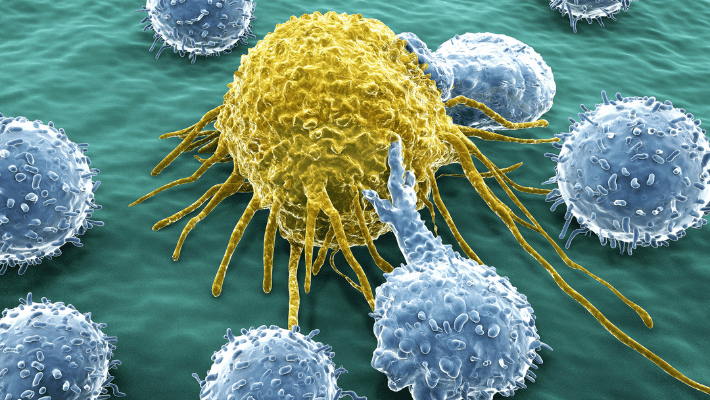
Cancer is a complex disease that occurs when abnormal cells in the body multiply uncontrollably, forming tumors or masses. These tumors can be benign (non-cancerous) or malignant (cancerous). While benign lumps are generally less concerning, malignant lumps can be life-threatening if left untreated.
It’s crucial to understand that not all lumps are cancerous, but it’s essential to have any new or growing lump examined by a veterinarian to determine its nature and appropriate course of action.
Detecting cancer lumps early can significantly improve your dog’s prognosis and increase the chances of successful treatment. Regular grooming and petting sessions can help you become familiar with your dog’s body, making it easier to identify any new or unusual lumps.
However, it’s important to remember that some lumps may be hidden beneath the skin or in areas that are difficult to access, making regular veterinary check-ups essential.
Types of Cancer That Can Cause Lumps In Dogs

Various types of cancer can lead to the formation of lumps or masses in dogs. Some of the most common types include:
- Mast cell tumors: These are cancerous tumors that arise from mast cells, a type of immune cell found throughout the body. They can appear as raised, hairless lumps on the skin or just beneath it.
- Lipomas: These are benign, fatty tumors that can develop just under the skin. While not cancerous, they can grow large and cause discomfort or interference with movement.
- Lymphoma: This is a cancer of the lymphatic system, which can cause swollen lymph nodes (lumps) in various parts of the body, such as the neck, groin, or armpits.
- Mammary gland tumors: Female dogs are susceptible to developing tumors in their mammary glands (breasts), which can appear as lumps or masses.
- Soft tissue sarcomas: These are cancerous tumors that arise from the connective tissues, such as muscle, fat, or fibrous tissue, and can form lumps or masses anywhere on the body.
It’s important to note that the type of cancer can significantly impact the treatment approach and prognosis, making accurate diagnosis by a veterinarian crucial.
Signs And Symptoms Of Cancer In Dogs
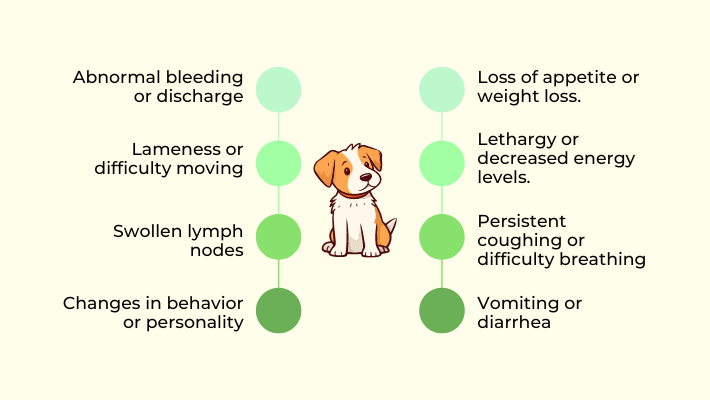
While the presence of a lump or mass is often the most obvious sign of cancer in dogs, there are several other symptoms that you should be aware of:
- Loss of appetite or weight loss
- Lethargy or decreased energy levels
- Persistent coughing or difficulty breathing
- Vomiting or diarrhea
- Abnormal bleeding or discharge
- Lameness or difficulty moving
- Swollen lymph nodes
- Changes in behavior or personality
It’s essential to remember that these symptoms can also be indicative of other health issues, so it’s crucial to have your dog examined by a veterinarian for an accurate diagnosis and appropriate treatment plan.
How To Detect A Cancer Lump On Your Dog
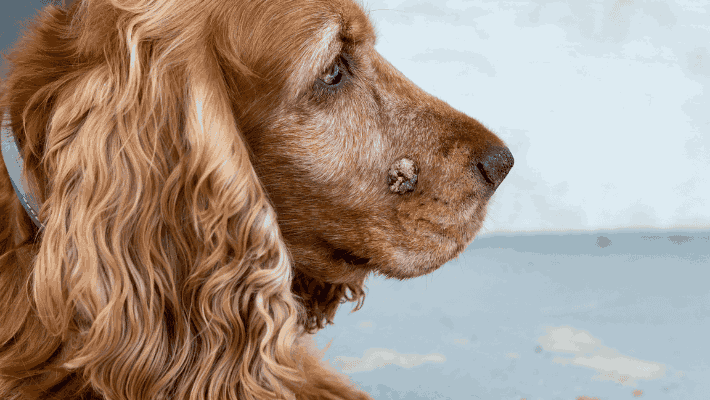
Regular grooming and petting sessions are the best ways to detect lumps or masses on your dog’s body. Here are some tips to help you effectively check for lumps:
- Start by running your hands over your dog’s entire body, paying close attention to areas like the neck, armpits, groin, and belly.
- Gently squeeze and manipulate the skin to feel for any abnormal growths or lumps beneath the surface.
- Pay special attention to areas where lumps are more likely to develop, such as the mammary glands in female dogs or the skin around the mouth and nose.
- Make note of any lumps you find, including their size, location, and any changes you observe over time.
- If you find a lump, don’t panic. Many lumps are benign, but it’s still important to have them evaluated by your veterinarian.
Remember, early detection is key when it comes to cancer in dogs, so it’s essential to perform regular checks and seek prompt veterinary attention for any concerning lumps or masses.
When To Be Concerned About a Lump on Your Dog

Not all lumps are cause for immediate concern, but there are certain characteristics that should prompt you to seek veterinary attention:
- Rapid growth or changes in size or appearance
- Lumps that are firm, fixed, or attached to underlying tissues
- Lumps that are warm to the touch or cause pain or discomfort
- Lumps that are accompanied by other symptoms, such as lethargy, loss of appetite, or weight loss
- Lumps that are located in areas where cancer is more common, such as the mammary glands or lymph nodes
If you notice any of these concerning signs, it’s essential to have the lump evaluated by your veterinarian as soon as possible. Early diagnosis and treatment can significantly improve the chances of a successful outcome.
Steps To Take If You Find a Cancer Lump on Your Dog

If you discover a lump on your dog that you suspect may be cancerous, it’s crucial to take immediate action. Here are the steps you should follow:
- Schedule a veterinary appointment: Contact your veterinarian and explain your concerns about the lump. Describe its location, size, and any other relevant details. Request an appointment as soon as possible.
- Prepare for the appointment: Make notes about when you first noticed the lump, any changes you’ve observed, and any other symptoms your dog may be experiencing. Bring these notes with you to the appointment.
- Discuss diagnostic options: Your veterinarian may recommend various diagnostic tests, such as fine-needle aspiration, biopsy, or imaging studies (e.g., X-rays or ultrasound), to determine the nature of the lump and the best course of action.
- Follow your veterinarian’s recommendations: Once a diagnosis has been made, your veterinarian will discuss the available treatment options and provide recommendations based on your dog’s specific condition and circumstances.
- Seek a second opinion (if desired): If you have any doubts or concerns about the diagnosis or treatment plan, don’t hesitate to seek a second opinion from another veterinarian or a specialist.
- Provide supportive care: Regardless of the treatment plan, your dog may require additional supportive care, such as pain management, nutritional support, or emotional support. Work closely with your veterinarian to ensure your dog’s comfort and well-being throughout the process.
Remember, early intervention and following your veterinarian’s recommendations are crucial for the best possible outcome when dealing with cancer lumps in dogs.
Diagnosing Cancer In Dogs

If a lump or mass is detected on your dog, your veterinarian will likely recommend one or more diagnostic tests to determine its nature and the appropriate course of action. Here are some common diagnostic procedures used for cancer in dogs:
- Fine-needle aspiration (FNA): This minimally invasive procedure involves using a small needle to extract cells from the lump for microscopic examination. FNA can provide valuable information about the type of cells present and whether they are cancerous or benign.
- Biopsy: A biopsy involves surgically removing a small portion of the lump or mass for detailed laboratory analysis. This procedure provides more comprehensive information about the type of cancer and its stage, which is essential for developing an effective treatment plan.
- Imaging studies: Diagnostic imaging techniques, such as X-rays, ultrasound, CT scans, or MRI, can help determine the location, size, and extent of the lump or mass, as well as identify any potential metastasis (spread) to other parts of the body.
- Blood tests: Blood tests, including complete blood counts (CBC) and blood chemistry panels, can provide valuable information about your dog’s overall health and help detect any potential complications or underlying conditions related to the cancer.
- Staging: Once a cancer diagnosis is confirmed, your veterinarian may perform additional tests to determine the stage of the cancer, which describes how advanced it is and whether it has spread to other parts of the body. Staging is crucial for determining the most appropriate treatment plan and prognosis.
It’s important to note that some diagnostic procedures may require sedation or anesthesia, which can carry additional risks, especially for older or compromised dogs. Your veterinarian will carefully weigh the benefits and risks of each diagnostic test and discuss the options with you to determine the best approach for your dog’s specific situation.
Treatment Options For Cancer In Dogs

The treatment plan for cancer in dogs will depend on various factors, including the type and stage of cancer, your dog’s overall health, and your personal preferences and considerations. Here are some common treatment options:
- Surgery: For localized tumors or masses, surgical removal may be recommended. This can involve removing the entire lump or mass, as well as a margin of surrounding healthy tissue to ensure complete removal of cancerous cells.
- Chemotherapy: Chemotherapy involves the use of specialized drugs to kill or slow the growth of cancer cells. It can be used alone or in combination with other treatments, such as surgery or radiation therapy.
- Radiation therapy: Radiation therapy uses high-energy beams or particles to target and destroy cancer cells. It can be used as a primary treatment or in conjunction with surgery or chemotherapy.
- Immunotherapy: This emerging treatment approach harnesses the body’s immune system to recognize and attack cancer cells. It may involve the use of specialized drugs or vaccines to stimulate the immune response against the cancer.
- Targeted therapy: Targeted therapies are designed to specifically target and disrupt the molecular pathways that drive cancer growth and spread. These treatments are often used in combination with other therapies for certain types of cancer.
- Palliative care: In cases where curative treatment is not possible or appropriate, palliative care focuses on managing symptoms and improving quality of life for your dog.
It’s important to have an open and honest discussion with your veterinarian about the available treatment options, their potential benefits and risks, and the expected outcomes. Together, you can develop a personalized treatment plan that takes into account your dog’s specific needs and your personal preferences and priorities.
Supportive Care For Dogs With Cancer Lumps

In addition to the primary cancer treatment, your dog may require supportive care to manage symptoms, side effects, and overall well-being. Here are some common supportive care measures:
- Pain management: Cancer and its treatments can cause significant pain and discomfort. Your veterinarian may prescribe pain medications or recommend alternative therapies, such as acupuncture or cold laser therapy, to help manage your dog’s pain.
- Nutritional support: Cancer can take a toll on your dog’s appetite and nutritional status. Your veterinarian may recommend a specialized diet or nutritional supplements to ensure your dog receives adequate nutrition during treatment.
- Hydration and fluid therapy: Some cancer treatments or side effects can lead to dehydration. Your veterinarian may recommend administering fluids subcutaneously (under the skin) or intravenously to maintain proper hydration.
- Wound care: If your dog undergoes surgery or develops skin lesions related to cancer, proper wound care will be essential for healing and preventing infection.
- Environmental modifications: Depending on your dog’s condition and mobility, you may need to make adjustments to your home environment, such as providing ramps, non-slip surfaces, or comfortable bedding, to ensure your dog’s safety and comfort.
- Emotional support: Dealing with cancer can be emotionally challenging for both you and your dog. Your veterinarian may recommend resources or support groups to help you navigate the emotional aspects of your dog’s illness.
Supportive care is an essential component of cancer treatment, as it helps manage symptoms, improve quality of life, and promote overall well-being for your dog throughout the treatment process.
Conclusion
Discovering a lump or mass on your beloved dog can be a heart-wrenching experience, but it’s important to remember that not all lumps are cancerous, and even those that are can often be treated successfully, especially when detected early. By being proactive, vigilant, and working closely with your veterinarian, you can navigate this challenging situation with confidence and provide your furry companion with the best possible care.
Remember, early detection and prompt veterinary attention are crucial when it comes to cancer lumps in dogs. Regular grooming and petting sessions can help you become familiar with your dog’s body and identify any new or unusual lumps. If you do find a concerning lump, don’t hesitate to schedule an appointment with your veterinarian for further evaluation.
The diagnostic process may involve various tests, such as fine-needle aspiration, biopsy, or imaging studies, to determine the nature of the lump and develop an appropriate treatment plan. Treatment options can range from surgery and chemotherapy to radiation therapy and targeted therapies, depending on the type and stage of cancer.
Throughout the journey, it’s essential to provide supportive care to manage your dog’s symptoms, side effects, and overall well-being. This may include pain management, nutritional support, hydration, wound care, and environmental modifications to ensure your dog’s comfort and quality of life.
While preventing cancer in dogs is not always possible, there are steps you can take to reduce the risk, such as maintaining a healthy weight, avoiding environmental toxins, and providing regular dental care. Additionally, spaying or neutering your dog before their first heat cycle can significantly reduce the risk of certain types of cancer.
Dealing with cancer in a beloved pet can be emotionally challenging for both the dog and their owner. It’s important to acknowledge and address the emotional impact, seek support from loved ones, veterinary professionals, and support groups, and prioritize self-care during this difficult time.
Remember, you are not alone in this journey. Numerous resources and support systems are available to help you navigate the complexities of cancer in dogs, from veterinary oncologists and cancer centers to pet hospice and palliative care services, financial assistance programs, and mental health professionals.
By staying informed, proactive, and seeking support when needed, you can provide your furry friend with the best possible care and create lasting memories together, even in the face of this challenging situation.
Other topics related to your dog health :





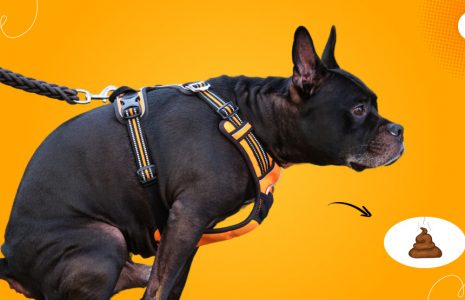
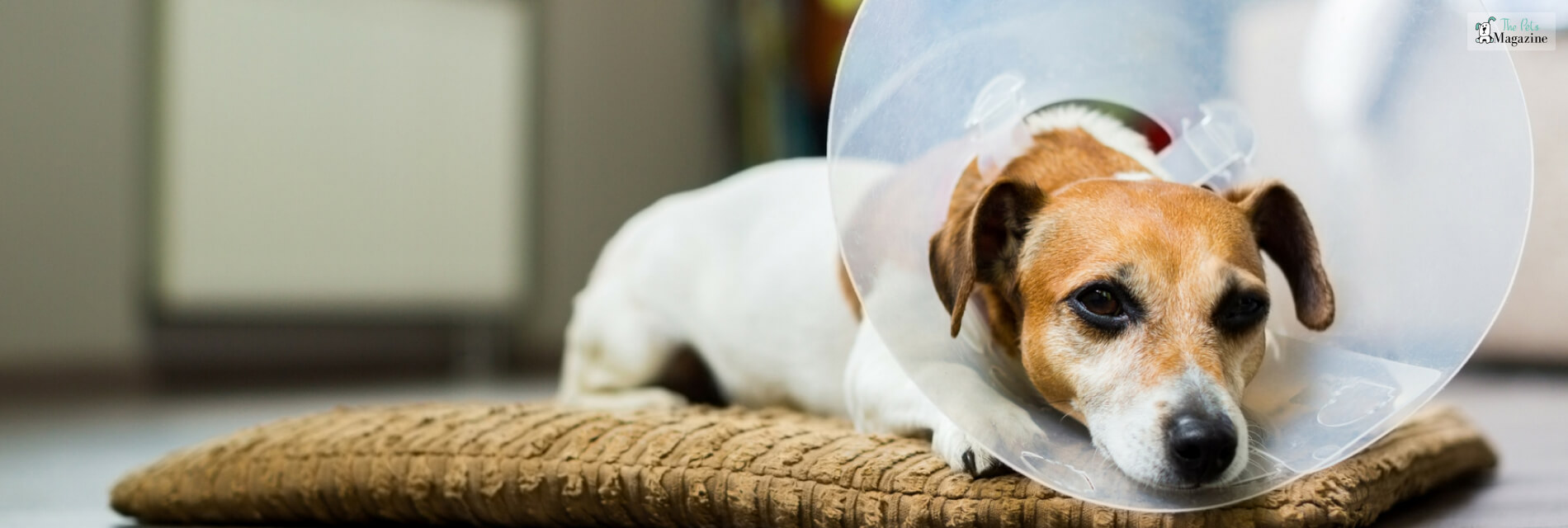
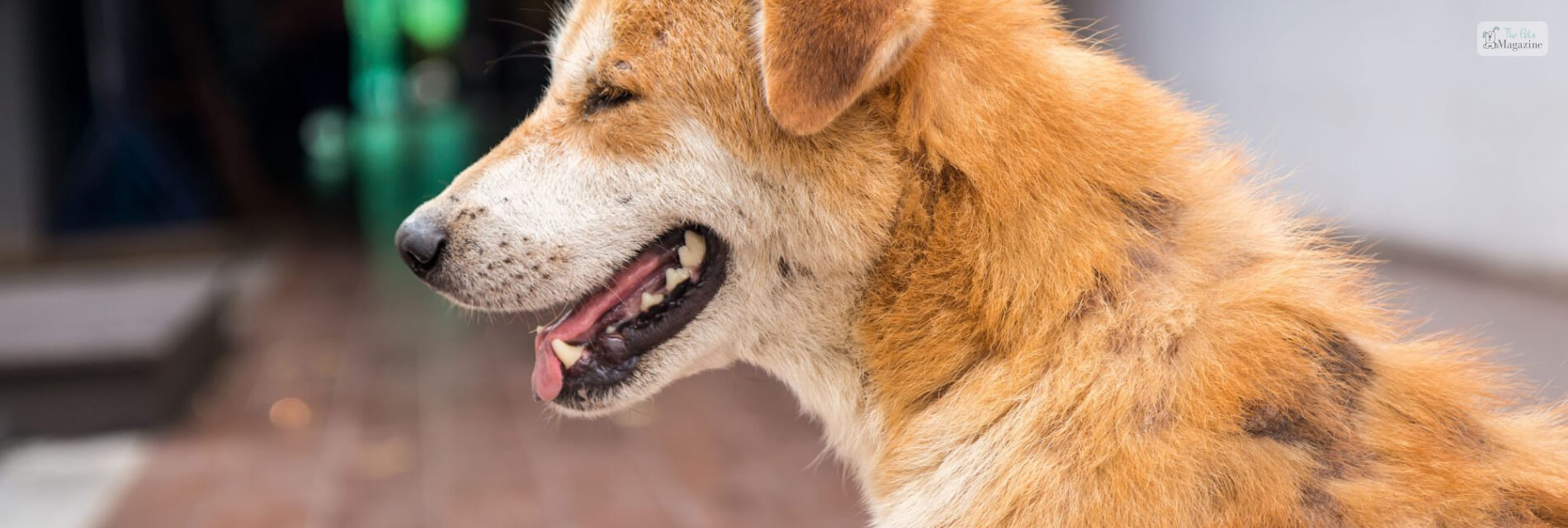
Leave A Comment